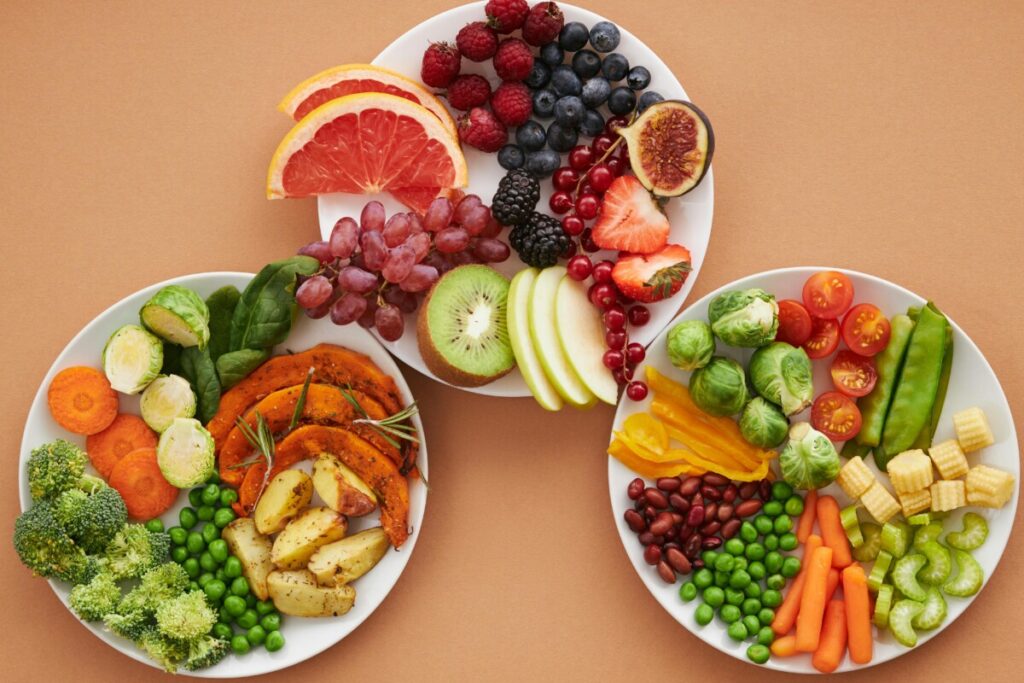Portion Control For Weight Loss

Welcome, readers, to today’s post on the topic of portion control for weight loss. In this article, I’ll delve into a subject that is often overlooked but plays a crucial role in achieving and maintaining a healthy weight. Whether you are just beginning your weight loss journey or looking for ways to fine-tune your current approach. Understanding the importance of portion control can make a significant difference in reaching your goals.
Throughout this article, I’ll explore various aspects of portion control. Including why it matters. How to measure portions accurately, and practical tips for incorporating portion control methods into your daily life. My aim is to equip you with the knowledge and tools necessary to make informed decisions about the food you consume. Ultimately leading to sustainable weight loss and improved overall well-being. So, whether you’re seeking to shed a few pounds. To maintain a healthy weight, or simply develop healthier eating habits. I invite you to join me on this journey of discovering the power of portion control. Let’s dive in and unlock the secrets to achieving your weight loss goals through mindful and balanced eating.
When it comes to weight loss, portion control plays a crucial role in achieving your goals. It’s not just about what you eat, but how much you eat. By practicing portion control, you can make healthier choices and reduce your calorie intake without feeling deprived.
What is portion control?
Portion control refers to the practice of eating specific amounts of food to meet your nutritional needs. It involves measuring or estimating serving sizes to ensure you consume appropriate portions. It’s all about finding the right balance and being mindful of how much you eat.
Why is portion control important for weight loss?
Calorie Control: Portion control helps control your calorie intake. By understanding portion sizes and limiting oversized servings, you can avoid consuming excess calories that can contribute to weight gain.
Healthy Habits: Practicing portion control encourages you to develop healthier eating habits. It promotes mindful eating, making you more aware of your hunger cues and preventing overeating.
Sustainability: Portion control allows you to enjoy a wide variety of foods while still managing your weight. It’s a sustainable approach to weight loss that doesn’t require strict diets or complete elimination of your favorite foods.
By implementing portion control strategies, such as using smaller plates, measuring your food, and being mindful of your hunger and fullness cues, you can achieve long-term weight loss success.
Understanding Portion Sizes
When it comes to maintaining a healthy weight or trying to lose a few pounds, portion control plays a vital role. It’s not just about what you eat, but also how much you eat. Understanding portion sizes can help you make smarter choices and control your calorie intake.
What is a serving size?
A serving size is a standard amount of food that is recommended for a single serving. It is essential to know that a serving size may vary depending on the food item. For example, a serving of cooked pasta is typically half a cup, while a serving of chicken breast is about the size of a deck of cards. Reading nutrition labels and consulting reliable sources can help you determine the correct serving sizes for various foods.
How to measure and estimate portion sizes accurately?
Use measuring cups and spoons: Measuring cups and spoons can help you accurately portion your food, especially when it comes to liquids, grains, and dry ingredients.
Get familiar with visual cues: Understanding visual cues can help you estimate portion sizes on the go. For example, a serving of vegetables is about the size of your closed fist.
Be mindful of portion distortion: Be aware of portion distortion, which is the tendency to eat larger portions when served more food. Pay attention to portion sizes when dining out or eating from larger packages.
By practicing portion control and being mindful of your serving sizes, you can maintain a healthy weight and support your weight loss goals. Remember, it’s not about deprivation, but about making healthier choices in the right amounts.
The Benefits of Portion Control

How portion control aids in weight loss
Portion control is a proven technique to manage weight and improve overall health. By consciously controlling the amount of food consumed, individuals can create a calorie deficit and promote weight loss. Portion control prevents overeating and helps individuals be mindful of their food intake. It encourages a balanced diet, ensuring that essential nutrients are consumed without excessive calories.
Improves digestion and nutrient absorption
Proper portion control also aids in digestion and nutrient absorption. By eating smaller portions, the body can effectively break down food and absorb nutrients more efficiently. This can lead to better digestion, reduced bloating, and improved overall gut health.
Controls appetite and prevents overeating
Portion control plays a vital role in controlling appetite and preventing overeating. By consuming appropriate portion sizes, individuals can train their bodies to recognize satiety cues and feel satisfied with less food. This can help prevent unnecessary snacking and reduce cravings for unhealthy foods. By implementing portion control strategies, individuals can achieve their weight loss goals, improve digestion, and develop healthier eating habits. It is crucial to be mindful of portion sizes and listen to the body’s hunger and fullness cues for long-term success.
Practical Tips for Portion Control

Using smaller plates and bowls
One effective way to control your portions is to use smaller plates and bowls. By doing so, you can trick your brain into thinking that you are eating a larger portion. Research has shown that people tend to eat less when they are served food on smaller plates, as it creates the illusion of a fuller plate. So next time you sit down for a meal, try using a smaller plate or bowl to help control your portion sizes.
Dividing meals in advance
Another useful strategy for portion control is to divide your meals in advance. When cooking, separate your food into individual servings, either by using meal prep containers or by portioning out your meals as soon as they are cooked. This can help you avoid overeating and ensure that you are consuming the appropriate portion size for each meal.
Being mindful of liquid calories
It’s important to be mindful of liquid calories when it comes to portion control. Beverages such as soda, juice, and alcoholic drinks can contain a significant amount of calories. These calories can add up quickly and contribute to weight gain. Opt for healthier options like water or unsweetened tea, and limit your intake of sugary drinks and alcohol to help manage your portion sizes and maintain a healthy weight. Remember, portion control is not about depriving yourself of your favorite foods, but rather about finding a balance and consuming the right amount to support your health and weight loss goals.
Conclusion
In conclusion, incorporating portion control into your weight loss journey can be a highly effective strategy for achieving your goals. By being mindful of the quantity of food you consume, you can create a calorie deficit, which is essential for weight loss. Additionally, portion control can help you develop a healthier relationship with food, promoting long-term success and overall well-being. Remember, portion control does not mean depriving yourself of the foods you love. It simply means being aware of serving sizes and making conscious choices about what and how much you eat. Building a balanced and nutritious diet, combined with regular physical activity, is key to sustainable weight loss.
FAQ’s
1. What is portion control, and why is it important for weight loss?
Answer: Portion control refers to the practice of eating specific amounts of food to meet your nutritional needs and avoid overeating. It is crucial for weight loss because it helps control calorie intake, encourages healthier eating habits, and supports sustainable weight management.
2. How can I accurately measure and estimate portion sizes?
Answer: You can measure portion sizes accurately using tools like measuring cups and spoons. Additionally, familiarize yourself with visual cues, such as using your closed fist to estimate a serving of vegetables. Be aware of portion distortion, especially when eating out or from larger packages.
3. What are the benefits of portion control for weight loss?
Answer: Portion control aids weight loss by creating a calorie deficit. It also improves digestion, enhances nutrient absorption, controls appetite, and prevents overeating. It promotes balanced eating and supports overall health.
4. What practical tips can help with portion control?
Answer: Useful strategies include using smaller plates and bowls to visually control portions, dividing meals in advance to avoid overeating, and being mindful of liquid calories by choosing healthier beverages like water and unsweetened tea. Portion control is about balance, not deprivation.
5. Is portion control sustainable for long-term weight loss?
Answer: Yes, portion control is a sustainable approach to weight loss because it allows you to enjoy a variety of foods while managing your weight. It promotes mindful eating and helps you develop healthier habits, contributing to long-term success in achieving and maintaining a healthy weight.
Summary
In this comprehensive article on portion control for weight loss, the importance of this often-overlooked practice is highlighted. Whether you’re starting your weight loss journey or looking to refine your approach, understanding portion control can be a game-changer. The article explores key aspects of portion control, such as its significance, accurate measuring techniques, and practical tips for implementation. Portion control is emphasized as a means to make healthier choices, reduce calorie intake, and develop sustainable eating habits.
Understanding portion sizes is a crucial component, with serving sizes varying for different foods. The article advises using measuring tools, and visual cues, and being aware of portion distortion when dining out. Benefits of portion control include weight management, improved digestion, nutrient absorption, and appetite control. Practical strategies like using smaller plates, dividing meals, and monitoring liquid calories are provided to support effective portion control.
In conclusion, portion control is promoted as an essential strategy for achieving and maintaining a healthy weight. It encourages balanced eating and a healthier relationship with food, ultimately contributing to long-term success in weight management. The message is clear: portion control is about mindful choices, not deprivation.
Thank you for reading today’s blog post.








